On May 25 1977, Star Wars hit theaters and was a massive hit, becoming the top grossing movie of it's time and cemented the summer blockbuster after Jaws created it 2 years earlier. It has since spawned a large franchise and helped kicked off a renaissance of big budget special effects extravaganzas we are still living through today. Since Star Wars, we had Indiana Jones, Ghostbusters, Jurassic Park, The Matrix, Marvel Cinematic Universe, and other successful franchises. But the movie almost wasn't made and had a very hard time getting released to theaters. Let's examine the case the troubled history of Star Wars.
New Hollywood and The Creation of the Summer Blockbuster
To understand what the movies were like before Star Wars, I think a little history is in order. In the late 1960's, Hollywood's studio system was coming to an end, so the American film industry focused on smaller movies made by a new generation of filmmakers who want to make movies they would like to make. This era of filmmaking was known as "New Hollywood". Among the directors from that period were Arthur Penn, Mike Nichols, Roman Polanski, Robert Altman, Bob Rafelson, Peter Bagdonovich, Brian de Palma, George Lucas, Steven Spielberg, Martin Scorsese, and Francis Ford Coppola.
On June 20th 1975, Steven Spielberg's Jaws hit the big screen and hit the box office roof, making it the first summer blockbuster. Before Jaws and Star Wars, the big studios didn't release the bigger films in the summer. The summer months were used as dumping grounds for smaller productions, but Jaws changed all that and the studios continue to release the bigger films for the summer, which led to the end of the New Hollywood era (the box office failures of Michael Cimino's Heaven's Gate and Francis Ford Coppola's One From The Heart may have contributed to that too).
Many young actresses were auditioned for the role of Princess Leia, including Jodie Foster, who turned down the role due to her contract with Disney. Carrie Fisher agreed to play the character on the condition that she loses 10 pounds.
Origins, Inspirations, and Pre-Production
In the early 1970's, George Lucas began to develop an idea to make a space opera. He grew up reading adventure novels and watching Flash Gordon serials on television. Originally he wanted to make a Flash Gordon movie, but he failed to secure the rights. So Lucas decided to make his own space opera, similar to Flash Gordon. For preparation, Lucas began to do some research on science fiction, world history, and mythology. He watched a lot of sci-fi movies, Akira Kurosawa's samurai epic The Hidden Fortress, and read books on mythology, particularly the works of Joseph Campbell, to create his own universe. While working on the script, he pitched the idea to United Artists, Universal Pictures, and Walt Disney Productions, but they turned down the project.
After being rejected by other studios, Lucas turned to Alan Ladd Jr, who was an executive at 20th Century Fox at the time. Ladd believed that Lucas was talented because he enjoyed his 1973 teen comedy, American Graffiti, and agreed that the film had potential. To convince other Fox executives, Lucas hired conceptual artist Ralph McQuarrie to paint certain scenes. Lucas had his then-wife Marcia, and their friends Willard Huyck and Gloria Katz to further revise the script. After Lucas showed the studio the screenplay and several of McQuarrie's paintings, the project was finally green lit with a budget of $8 million. The success of American Graffiti led to Lucas renegotiating his deal with Alan Ladd Jr, therefore protecting the film's sequel and merchandising rights.
When it came time to cast the film, Lucas didn't want to go for big names, favoring actors who have little experience with the film industry. 20th Century Fox were concerned over this and demanded established actors. Mark Hamill plays Luke Skywalker, a farm boy who joins the Jedi cause after his home is destroyed by the Empire. Hamill was chosen because of his natural delivery to the dialogue.
Lucas was initially reluctant to cast Harrison Ford as smuggler Han Solo, since they worked together for American Graffiti and Lucas' desire for new faces. So Ford was hired to assist actors who were auditioning for the role. Lucas was won over by Ford's performance and decided to cast him instead of the other actors who were considered.
Many young actresses were auditioned for the role of Princess Leia, including Jodie Foster, who turned down the role due to her contract with Disney. Carrie Fisher agreed to play the character on the condition that she loses 10 pounds.
For the role of Jedi Master Obi-Wan Kenobi, established British actor Alec Guinness was cast. He agreed to take the part on the condition that he would not have to do with any publicity with the film. After he completed the trilogy, Guinness has tried to distance himself from the Star Wars franchise.
For the role of Darth Vader, English body builder and stuntman David Prowse was cast as the body of Darth Vader. He was originally going to do the voice, but due to Prowse's West Country English accent, Lucas wanted to search a voice actor. Fearing Orson Welles would be too recognizable, he cast the lesser-known James Earl Jones (pictured here) instead.
Veteran horror actor Peter Cushing was cast as Darth Vader's second in command, Grand Moff Tarkin. Lucas originally wanted Cushing to play Obi-Wan Kenobi, but decided that his lean features were best suited for the role of Trakin.
Peter Mayhew, who sadly passed away this year, plays Chewbacca, a Wookiee who is sidekick of Han Solo. Mayhew was immediately cast after he stood up to greet Lucas.
For the role of protocol droid C3PO, mime artist Anthony Daniels was picked after he saw one of Ralph McQuarrie's paintings. Lucas initially didn't want Daniels to do the voice. 30 voice actors were considered for the voice acting. According to Daniels, one of the actors recommended the role to him.
Midget actor Kenny Baker plays R2-D2, a droid who carries a secret message to be delivered to Obi-Wan Kenobi. Although he was initially reluctant to play the part, he was cast immediately after meeting with George Lucas.
After the studios abandoned their special effects departments in favor of smaller-scale films, George Lucas founded his own special effects company, Industrial Light and Magic (ILM), in the summer of 1975. Among the company's first actions was hiring a team of special effects artists and animators who will later become celebrities, like John Dykstra, Dennis Muren, Ken Ralston, Richard Edlund, and Phil Tippet. Their first job is to build models, blue screens, optical printers, computer controlled cameras, matte paintings, stop motion puppets, and animation stands for scenes that require traditional animation techniques. With project given the green light, a new special effects company, and a cast that is filled with mostly unknowns, it's time to bring George Lucas' vision to life.
Difficult Shoot
Production of Star Wars began in Tunisia on March 22, 1976. This is where trouble began. The project fell behind schedule due to malfunctioning props, electronic breakdowns, a freak rainstorm, and other production woes. The only silver lining is that after Tunisia, they'll move to Elstree Studios in London, which is a more controlled environment.
But just because it was filmed in a more controlled environment, it doesn't mean that it's problem-free. Lucas faced strict British union rules, meaning that he had to stop filming by 5:30 pm, unless he's in the middle of a scene. Despite Lucas' efforts, the crew didn't take the film very seriously and felt that it was a children's film. Lucas also clashed with cinematographer Gilbert Taylor, attempting to dictate where lights should go on set, and wanted to make adjustments himself, which Gilbert said wasn't his job. He would light the scene the way he thought Lucas wanted it. Problems arose with Taylor describing the sets John Barry made as "looking like a coal mine." He also complained about the black and gray color scheme. To solve the problem, they added holes on the ceilings, floors, and walls to add lights into the sets. Researching this article by watching Oliver Harper's Retrospective and Reviews series, I agree that Taylor receives more credit for this.
Lucas rarely spoke to the actors, who believed that they expected too much of them while providing little direction. His only instructions he'd give the actors was "faster and more intense". Post-production was stressful due to pressure from the studio, and Mark Hamill's car accident restricted re-shoots. At this point, 20th Century Fox executives were growing less confident in the movie and support was offered from Alan Ladd Jr. He told Lucas to finish the movie within a week or he will shut production down. Lucas split the crew in 3 units, with Lucas doing the first, the second led by producer Gary Kurtz, and production supervisor Robert Watts doing the third.
I Got a Bad Feeling About This (Post-Production and Distribution)
Star Wars was originally slated for a Christmas 1976 release, but the release time was changed to summer 1977. Some doubted if the movie will ever hit theaters. But as things were bad with the shoot, post-production was even worse. After filming had been completed, Lucas was shocked when the first edited version of the movie was "a complete disaster". As a result, Lucas fired editor John Jympson and replaced him with Paul Hirsch and Richard Chew. He was able to borrow his then-wife Marcia, who was editing Martin Scorsese's New York, New York. Their job was to fix and improve
the pacing, cut a lot of unneeded material, and restructure scenes in proper context. For more information on how Star Wars was saved during editing, check out RocketJump's video "How Star Wars Was Saved In The Edit" linked below.
Industrial Light and Magic was also struggling with their groundbreaking special effects. The company spent half the budget on four shots that Lucas rejected. Rumors also surfaced that ILM employees lack discipline, which led to Lucas interfering constantly to ensure that they were on schedule. To complete the special effects, ILM was forced to do a year's worth of work in six months. For guidance, Lucas edited stock footage of aerial dogfights taken from WWII films, which enhanced the pacing of the space battles.
With disastrous rough cuts, ILM in chaos, and a studio putting too much pressure on the project, Lucas faced a lot of challenges. At one point, Lucas felt sharp chest pains. Fearing a heart attack, he went to the hospital. He was diagnosed with hypertension and exhaustion, and was warned to reduce his stress level.
During post-production, sound designer Ben Burtt to create a unique sound design for the film. Blaster sounds were modified recordings of steel wires being tapped. The sound effect for the lightsaber was created by mixing the hums of old movie projectors and interference caused by a TV set. For Chewbacca's growls and roars, he recorded several animal sounds and combined them together. Darth Vader's breathing was done by Burtt breathing through a scuba mask in front of a microphone. And R2-D2's beeps and blips were done by filtering his voice through a electronic synthesizer.
In February 1977, Lucas showed Fox executives and several director friends a rough assembly of the film. The cut had a different opening crawl than the finished film, and used David Prowse's voice as Darth Vader. It also lacked most special effects: hand-drawn arrows were used as placeholders or the blaster beams and WWII dogfight footage was used for the spaced battles. The response to the directors present was not very good. Steven Spielberg, who claimed to be the only director to have enjoyed the movie, believed that the disappointed reactions came from the lacking special effects and they believed that the film was nonsensical. Alan Ladd Jr and other Fox executives, in contrast, loved the movie. The budget increased from $8 million to $11 million. Only one crucial element was left: the musical score.
Spielberg recommended Lucas to hire legendary composer John Williams to compose the score, coming off from his Oscar winning score for Jaws. In March 1977, he conducted The London Symphony Orchestra to record the movie's soundtrack in 12 days.
The movie was finally completed, but it's having a rough time releasing it to theaters. George Lucas hired science fiction fan Charles Lippincott as the film's marketing director. Because 20th Century Fox gave the film little marketing support, he had to look elsewhere. He contacted Marvel Comics and Del Ray to publish comic books and novelizations based on the movie. Fearing that it will be crowded out by other summer movies, like Smokey and the Bandit, the release date was pushed to Wednesday, May 25th. Unfortunately, fewer than 40 theaters agree to book Star Wars. Fox actually expected The Other Side of Midnight, based on the novel of the same name, to be the big summer hit of 1977, while they expected Star Wars to be a "B movie". The movie hit 32 theaters on May 25th, 1977. This will be the day the movies will change forever.
May The Force Be With Us (Release and Impact)
On May 25th, 1977, Star Wars hit theaters and became a phenomenal smash hit. It replaced Jaws as the top grossing film of it's time, therefore cementing the summer blockbuster and creating a renaissance of special effects blockbusters, replacing personal filmmaking from the 1970s. Critics and moviegoers were blown away by the film and won six Academy Awards for Best Art Direction, Best Editing, Best Visual Effects, Best Sound, Best Costume Design, and Best Original Score. It was nominated for Best Picture, but lost to the Woody Allen comedy, Annie Hall. It has spawn several prequels and sequels, spin offs, video games, and tons of merchandise and action figures. It made stars out of Mark Hamill, Harrison Ford, and Carrie Fisher. Star Wars is not just a movie, it's an event.
My Review and Conclusion
There's nothing I could have said about the movie that has already been said by countless critics, film historians, and fans. This is a revolutionary landmark in the history of the movies, with memorable characters, dazzling special effects, and fun storytelling that mixes mythology, fairy tales, Western and Eastern culture, references to other movies, and biblical references in such an effective way. It really was saved during post production. With a studio leaning over Lucas and crew members questioning him, the mishaps behind the scenes really did help and evolve the movie during production. If George Lucas had his own way, the film will be a gimmicky disaster. I'll get into more detail on this review when I review the whole trilogy as one of my favorite movies. But for now, Star Wars is truly one of a kind.
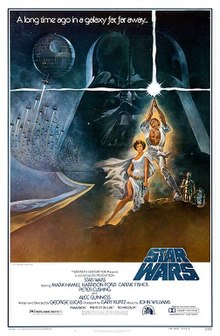



.jpg/220px-Mark_Hamill_(2017).jpg)


.jpg/220px-Sir_Alec_Guinness_Allan_Warren_(2).jpg)
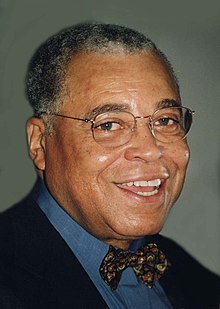
.png/220px-Peter_Cushing%2C_from_The_Brides_of_Dracula_(1960).png)

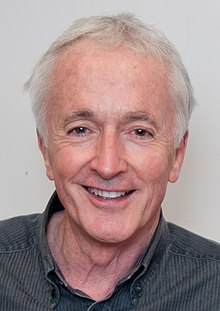
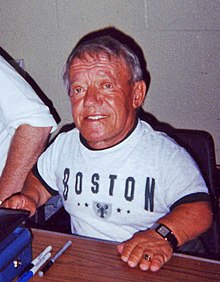
.svg/180px-Industrial_Light_%26_Magic_(logo).svg.png)
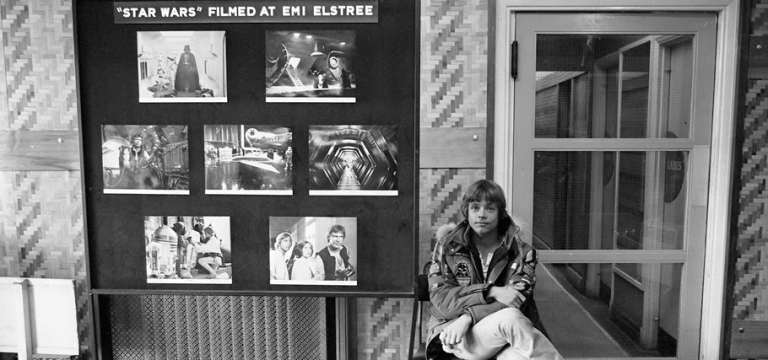

.jpg/220px-Ben_Burtt_Celebration_Europe_II_(Cropped).jpg)
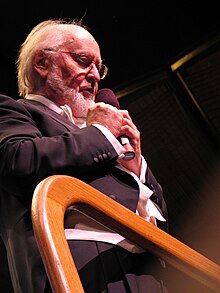



No comments:
Post a Comment